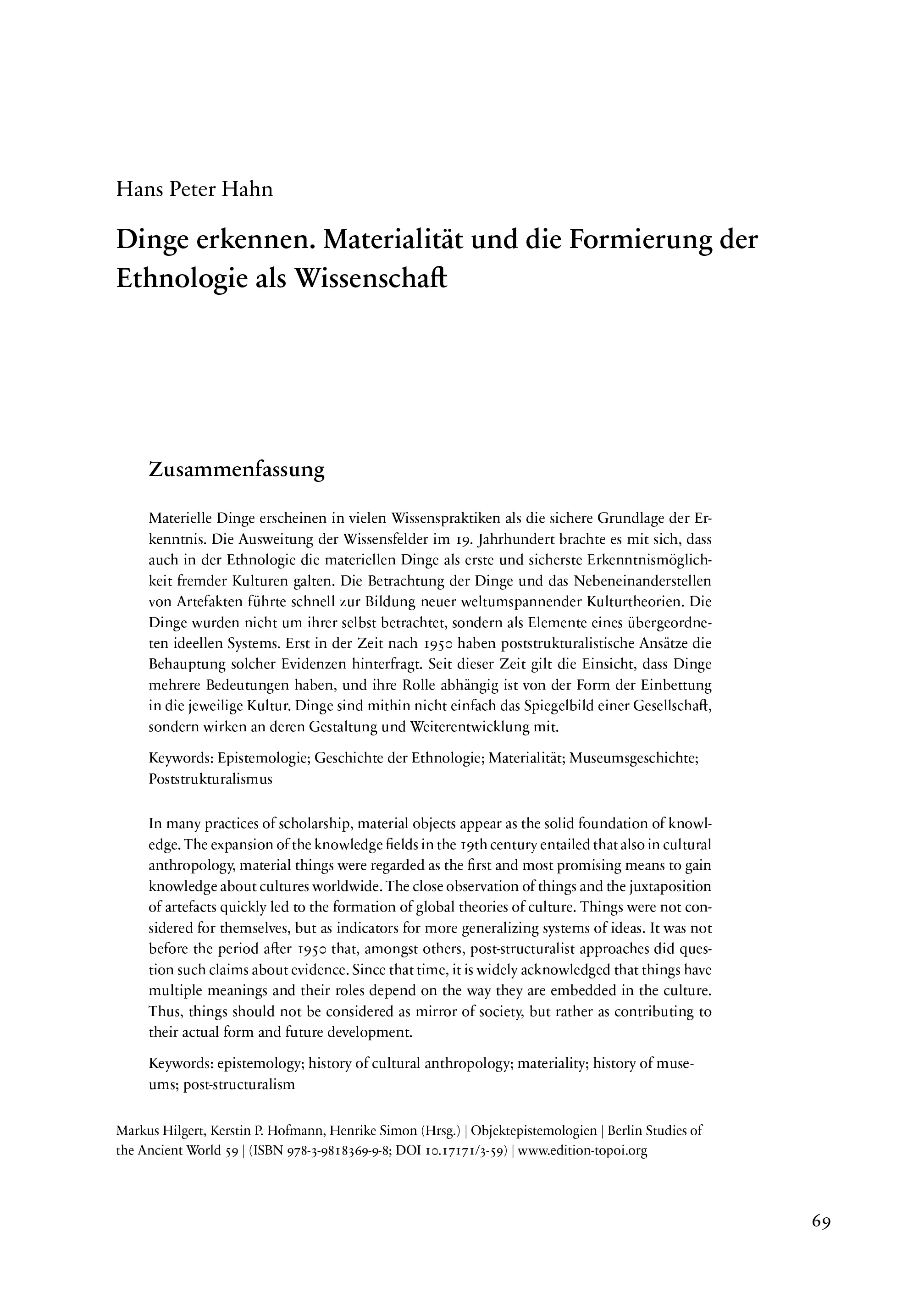Dinge erkennen
Materialität und die Formierung der Ethnologie als Wissenschaft
In many practices of scholarship, material objects appear as the solid foundation of knowledge. The expansion of the knowledge fields in the 19th century entailed that also in cultural anthropology, material things were regarded as the first and most promising means to gain knowledge about cultures worldwide. The close observation of things and the juxtaposition of artefacts quickly led to the formation of global theories of culture. Things were not considered for themselves, but as indicators for more generalizing systems of ideas. It was not before the period after 1950 that, amongst others, post-structuralist approaches did question such claims about evidence. Since that time, it is widely acknowledged that things have multiple meanings and their roles depend on the way they are embedded in the culture. Thus, things should not be considered as mirror of society, but rather as contributing to their actual form and future development.
Materielle Dinge erscheinen in vielen Wissenspraktiken als die sichere Grundlage der Erkenntnis. Die Ausweitung der Wissensfelder im 19. Jahrhundert brachte es mit sich, dass auch in der Ethnologie die materiellen Dinge als erste und sicherste Erkenntnismöglichkeit fremder Kulturen galten. Die Betrachtung der Dinge und das Nebeneinanderstellen von Artefakten führte schnell zur Bildung neuer weltumspannender Kulturtheorien. Die Dinge wurden nicht um ihrer selbst betrachtet, sondern als Elemente eines übergeordneten ideellen Systems. Erst in der Zeit nach 1950 haben poststrukturalistische Ansätze die Behauptung solcher Evidenzen hinterfragt. Seit dieser Zeit gilt die Einsicht, dass Dinge mehrere Bedeutungen haben, und ihre Rolle abhängig ist von der Form der Einbettung in die jeweilige Kultur. Dinge sind mithin nicht einfach das Spiegelbild einer Gesellschaft, sondern wirken an deren Gestaltung und Weiterentwicklung mit.

